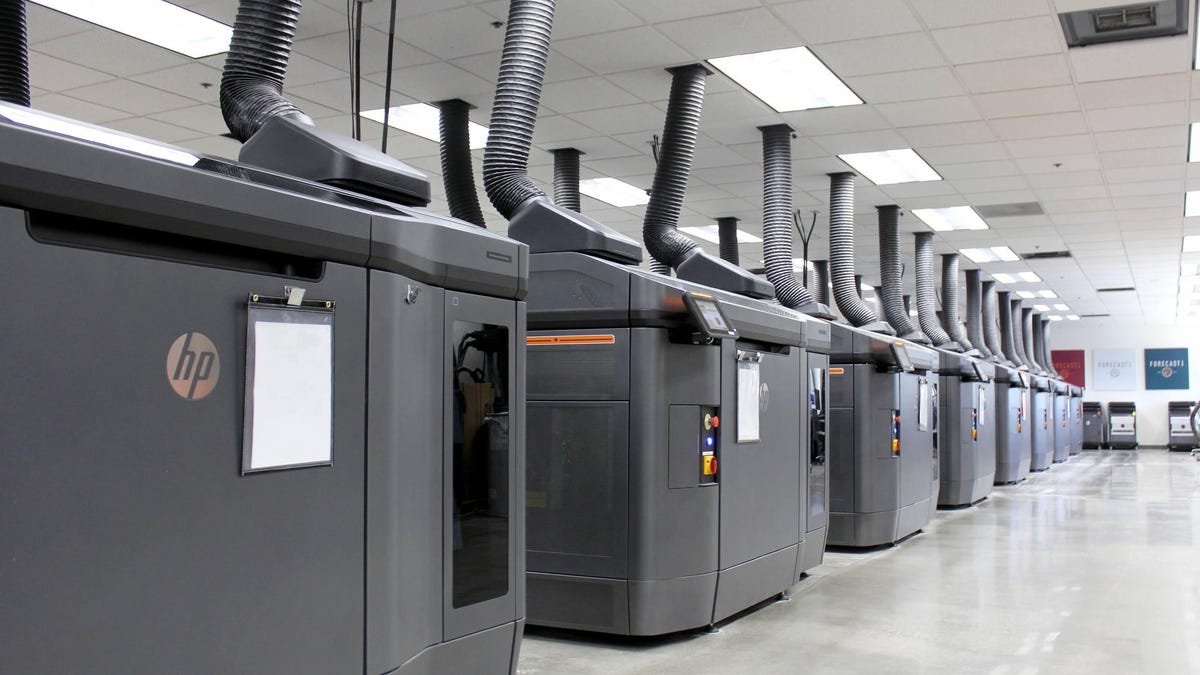GM 3D Prints 60,000 Parts to Keep Tahoe Deliveries on Time

At upward of $200,000 per model, a room with HP Multi Jet Fusion 3D printers is not a small investment.
What's happening
GM turned to industrial 3D printers to avoid a crucial parts shortage.
Why it matters
This is the first time we've seen additive manufacturing on such an automotive scale.
What's next
This points to 3D printing moving beyond the prototyping phase and into proper manufacturing.
Current chip shortages may be the buzzkill quashing your most urgent capitalistic desires during the pandemic, but production supply issues aren't limited to the silicon variety. When faced with an inability to produce a component needed for delivery of the 2022 Chevrolet Tahoe, General Motors engineers turned to a novel solution: 3D printing.
3D printing, more formally known as additive manufacturing, is the process of rapidly crafting fully formed parts from digital models. GM made a major investment in the tech in 2020, dedicating 15,000 square feet of space to facility dubbed the Additive Industrialization Center. A year later, GM needed help. Chevrolet engineers made a late change to the 2022 Tahoe's design, necessitating the creation of an additional part: A new, flexible "spoiler closeout seal" fills a gap at the rear of the big SUV. Developing the tooling to injection-mold the things would have taken too long, delaying the delivery of 30,000 vehicles.
The parts, as they come out of the printer, are functional but not exactly aesthetically perfect.
Enter 3D printing. GM engineers partnered with GKN Additive Forecast 3D, experts in additive manufacturing at industrial scales. GKN engineers were able to quickly print the components using a flexible material that met GM's criteria. The parts were created using HP Multi Jet Fusion 3D printers. These are a lot more sophisticated than your Prusa or Anycubic at home, but operate on the same basic principle of creating components layer by layer. GKN engineers even used a process called vapor polishing to give the parts a perfect shine. (This is something you can do with your home 3D printer using certain types of filaments, like ABS, and vaporized acetone. However, I don't really recommend it unless you have and know how to use all the requisite safety gear.)
The final part, vapor-polished to a nice sheen and flexible.
Since each Tahoe requires two seals, Chevrolet needed a whopping 60,000 of them, and GKN Additive Forecast 3D delivered in just five weeks. That's less than half the time going the injection-molding route would have taken, which got all those SUVs out the door on time.
This isn't the first time we've seen 3D printing used on production cars. Heck, GM's even used it before to create the little metal shifter inserts on the CT5-V Blackwing. However, this is almost certainly the largest deployment of additive tech in a production car and an interesting preview of what's to come.

